7928 Submariner
The 7928 was the first Tudor Sub to feature crown guards...
The Tudor Reference 7928 is perhaps one of the most classic Tudor sports models. It saw a long production run fromapproximatly 1959 (earliest caseback we have seen is an IV.59 with a 300.xxx serial) till circa 1968. There are several versions of the 7928.
In broad overview there are two reference groups. The 7928 and the 7928/0. The /0 was added to many Tudor references in the mid 60′s to denote stainless steel – in a similar fashion as Rolex did with their models. Within the two main groups, a large amount of variations exist.
The Calibre 390 Movement
The Tudor 7928 was powered by the Cal 390, which was first seen in early Tudor automatics, most famously the 34mm Tudor Oysters, from the early 1950s. It was a modified movement (a Tudor trademark until recent years) by Flurier and had a frequency of 18,000 beat per hour.
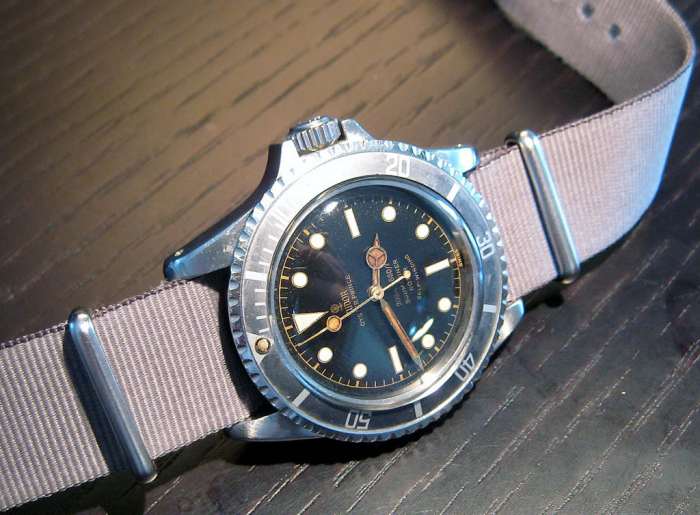
TUDOR Reference 7928 Submariner Square crown guards.. Notice the MK I gilt dial. Gilt track + gilt writing on the dial. Very rare! (click to zoom)
Dial Versions
It is quite complex to chart all the dial variations of the 7928. First of all, these watches due to their lower price point and extensive military use and so may have had questionable service histories. This means that dials may have been changed back and forth and been redone, relumed or repainted. In this section we will do our best to describe the known varieties.
The early 7928′s feature the “chapter dial” where a inner ring is printed on the dial a few milimeters from the edge.
The upper half of the dial features the classic small Tudor Rose. Underneath the text ” Oyster-Prince “. The bottom portion differs a bit from model to model – but typically they feature the ” 200m = 660ft ” (denoting depth rating of course), then ” SUBMARINER ” and the two last lines ” Rotor ” and ” Self-winding ” – which of course denoted the automatic movement.
The following dial variations have been found so far:
MK I. Always cased in a Square Crown case. Gilt writing. Gilt track.
MK II. Gilt track – silver writing
MK III. Silver writing and no track
MK IV. Regular writing and markers similar to Rolex 5513
MKI dials are also seen in exclamation point (small trit dot at 6) and Underline dial variations.
Exclamation Dot
The so-called ‘Exclamation Dot’ dials were made as the use of radium was being phased out in the watchmaking industry. To signify that the dials had safe levels radiation in the luminous, Rolex and Tudor devised system – a code of sorts. In around 1962 small dots were applied the edge of the dial, directly below the 6 0’clock marker, hence the nickname exclamation mark. These watches typically features a much less radioactive mix of luminous material.
I have written in some detail at these dials here at the Bulang and Sons magazine. Go and have a read to find out more.
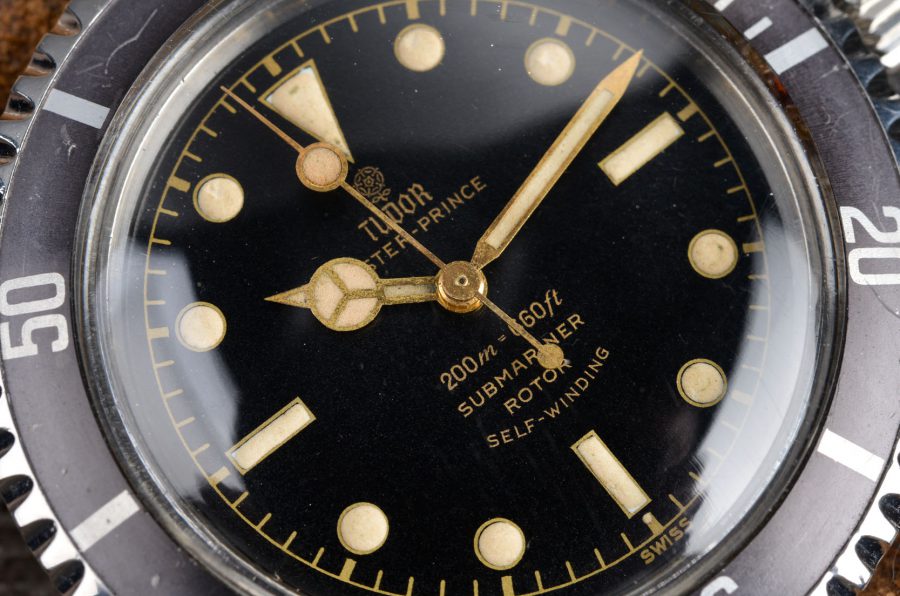
The 7928 dial with exclamation dot. (click to zoom)
| Photo | Bernhard Bulang |
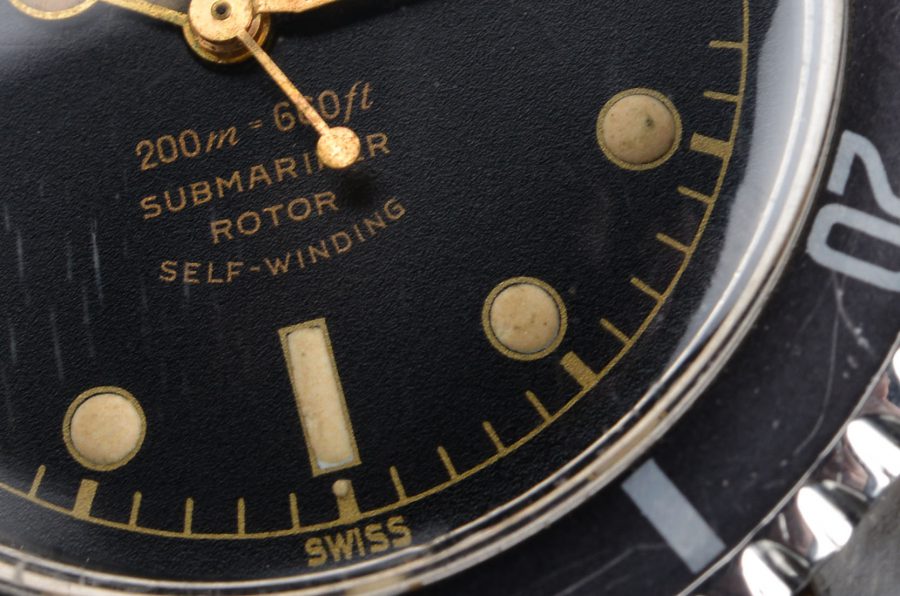
A close up of the dot. Check out the detail of the dial too - stunning! (click to zoom)
| Photo | Bernhard Bulang |
Underline Dials
Shortly following the ‘Exclamation Dot’ dials, Tudor introduced the ‘Underline dial’. This small horizontal line was added to dials, which signified an even lower radiation level than the ‘Exclamtion Dot’ dials and are known as the ‘underline’ dials. These were seen on Tudor 7928s in around 1963.
Again, I’ve written about this era for Tudor and Rolex here at Bulang and Sons.
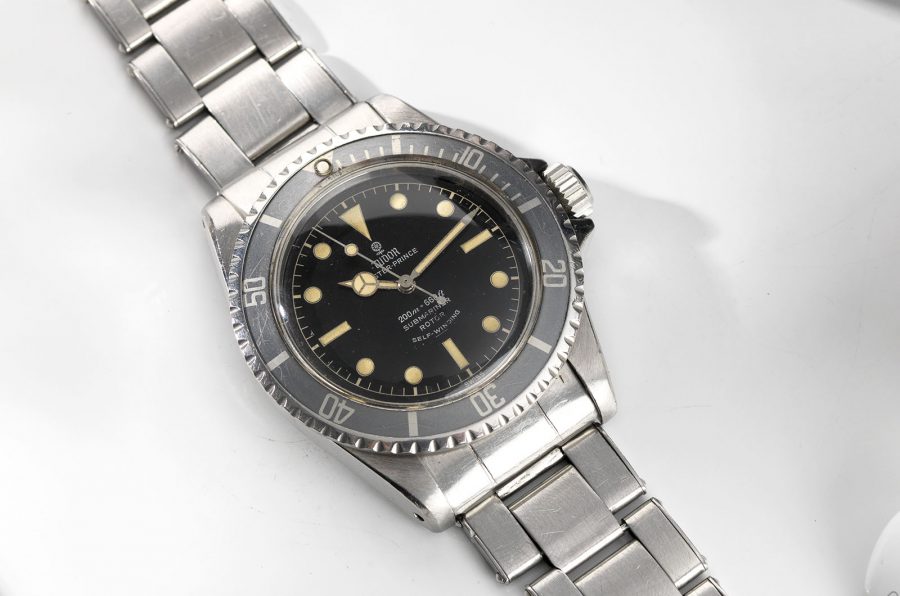
Tudor 'Underline' dial in a 1963 7928 (click to zoom)
| Photo | Bernhard Bulang |

Close up of the 'Underline' dial. Note the move to silver text but with gilt closed minte track (click to zoom)
| Photo | Bernhard Bulang |
7928 Case Variations
At least 4 case variations have been seen:
- The ‘Square’ crown guards – Mk1 Case
- The ‘Eagle Beak’ Pointed Crown Guards – Mk2 Case
- Pointed Crown Guards (PCG) – Mk3 Case
- Round crown guards – Mk 4 Case
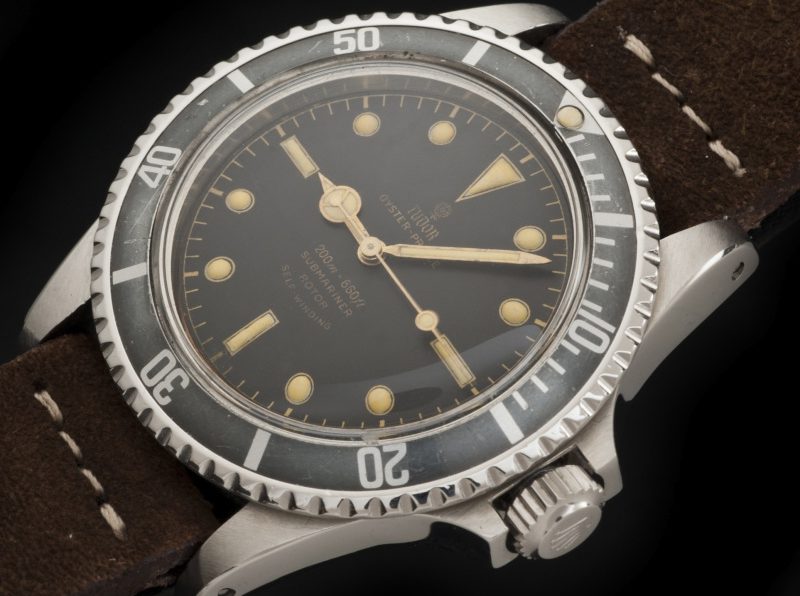
The Mk1 case with 'Square' crown guards (click to zoom)
| Photo | L Garba/Only Vintage Official |
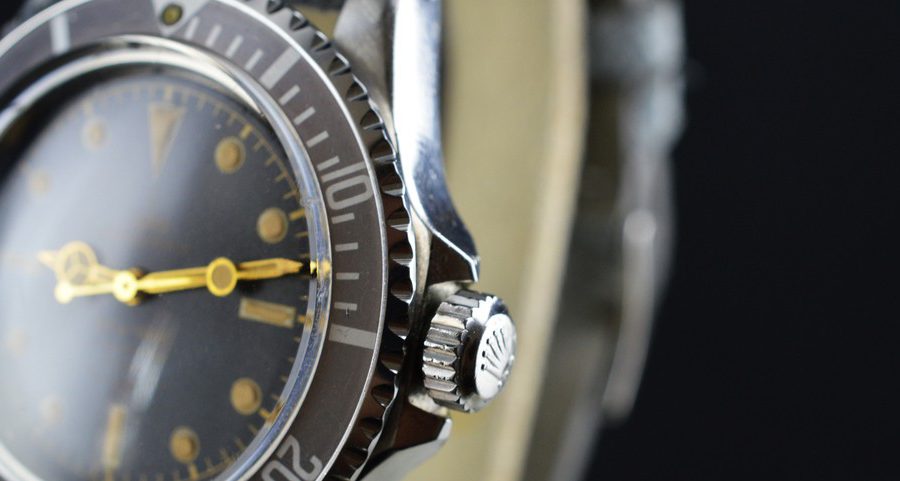
The 'Eagle Beak' crown guards on a Mk2 case (click to zoom)
| Photo | VRF |
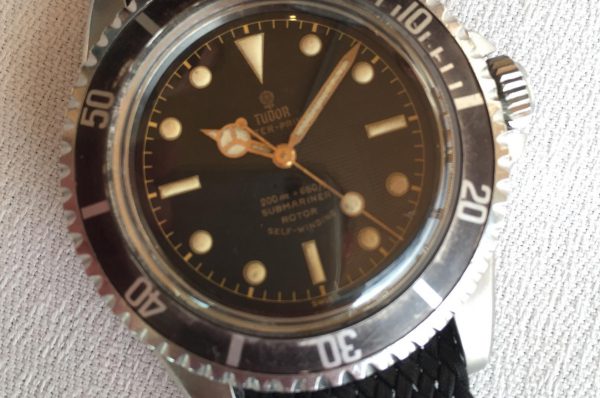
A Mk2 'Eagle Beak' case with correct dial and red triangle insert
| Photo | Ross Povey |
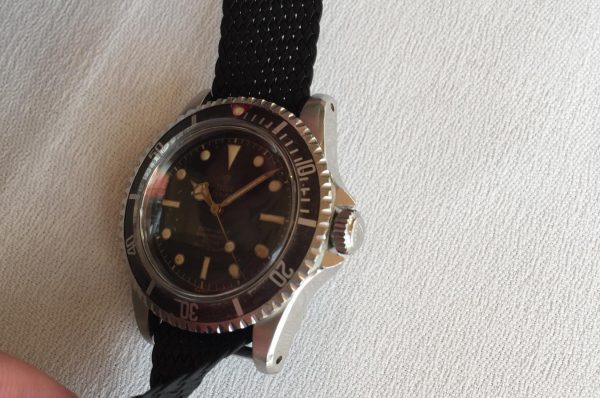
The crown guards are modified Mk1 square guards
| Photo | Ross Povey |
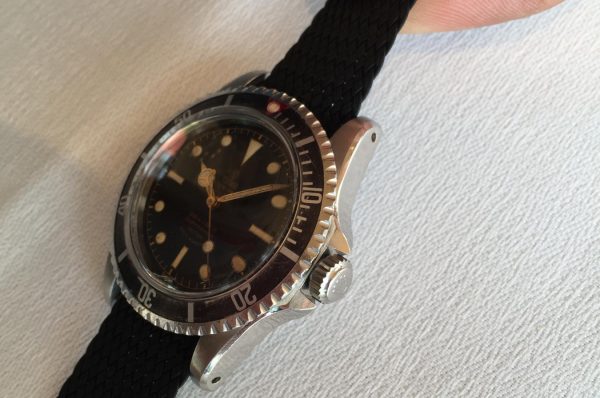
Mk2 Case - 'Eagle Beak' like...an eagle's beak!
| Photo | Ross Povey |
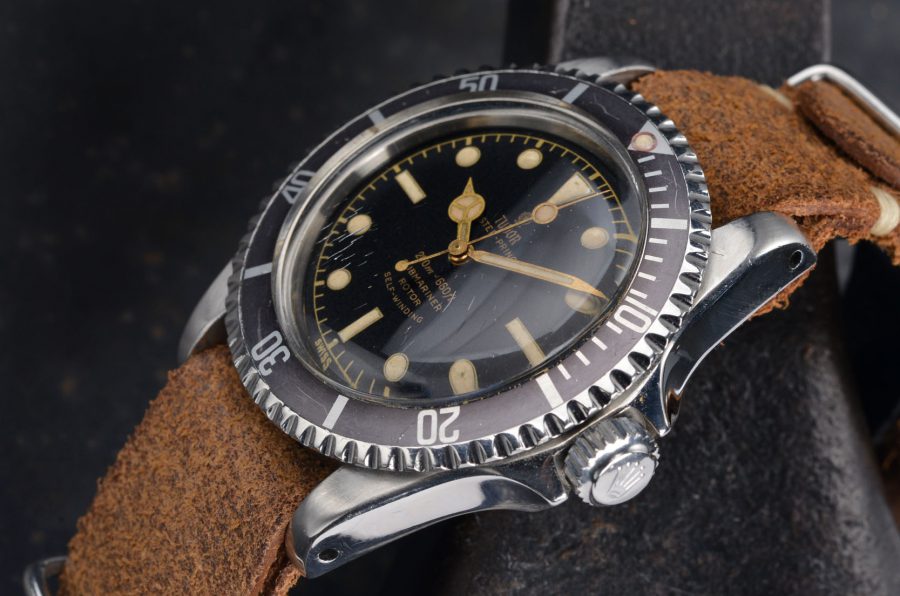
The 'Pointed Crown Guards' on the Mk3 case (click to zoom)
| Photo | Bernhard Bulang |
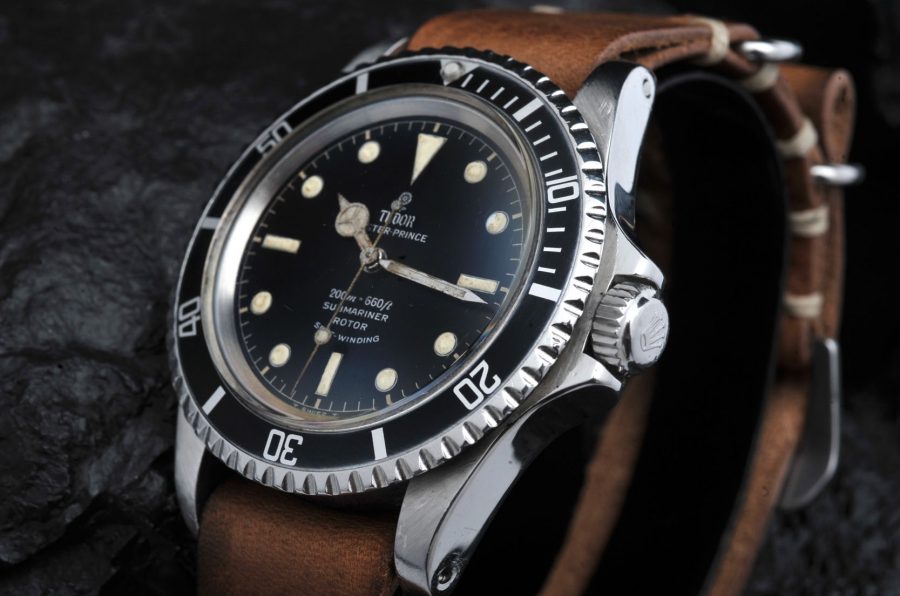
Mk4 case with 'Rounded' crown guards (click to zoom)
| Photo | Bernhard Bulang |
The crystal for these cases are all Tropic 19. This is shared with (amongst others) the Rolex 5512 and 5513 Submariners. Case and look wise – these are the ones closest to the Tudor Reference 7928.